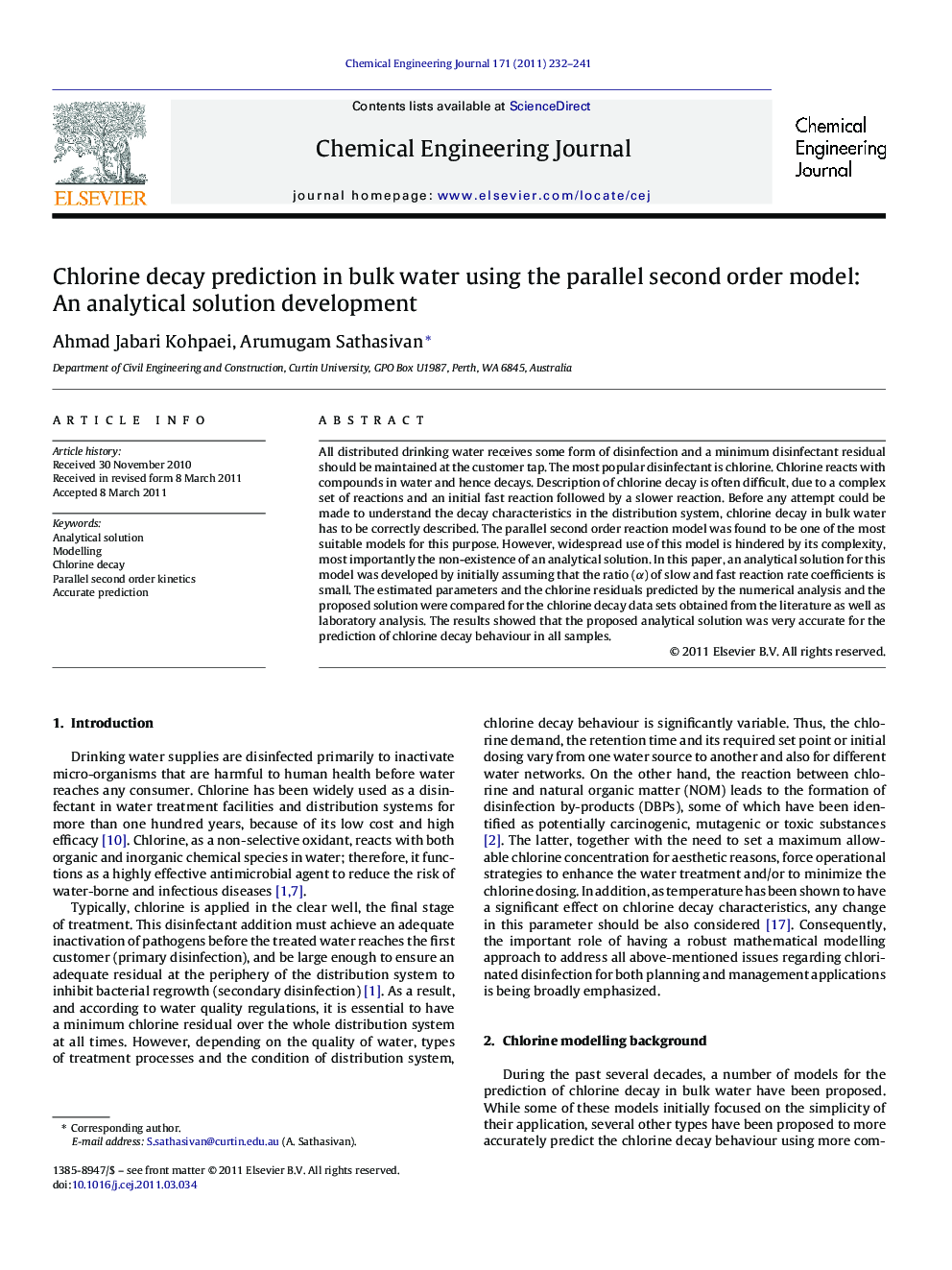| Article ID | Journal | Published Year | Pages | File Type |
|---|---|---|---|---|
| 150849 | Chemical Engineering Journal | 2011 | 10 Pages |
All distributed drinking water receives some form of disinfection and a minimum disinfectant residual should be maintained at the customer tap. The most popular disinfectant is chlorine. Chlorine reacts with compounds in water and hence decays. Description of chlorine decay is often difficult, due to a complex set of reactions and an initial fast reaction followed by a slower reaction. Before any attempt could be made to understand the decay characteristics in the distribution system, chlorine decay in bulk water has to be correctly described. The parallel second order reaction model was found to be one of the most suitable models for this purpose. However, widespread use of this model is hindered by its complexity, most importantly the non-existence of an analytical solution. In this paper, an analytical solution for this model was developed by initially assuming that the ratio (α) of slow and fast reaction rate coefficients is small. The estimated parameters and the chlorine residuals predicted by the numerical analysis and the proposed solution were compared for the chlorine decay data sets obtained from the literature as well as laboratory analysis. The results showed that the proposed analytical solution was very accurate for the prediction of chlorine decay behaviour in all samples.
